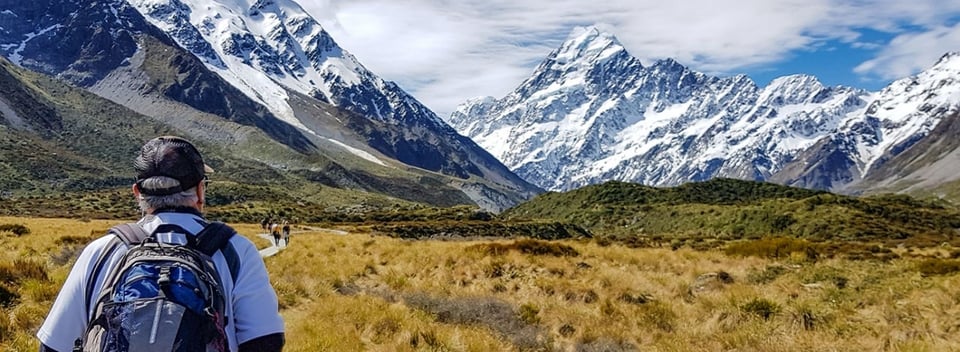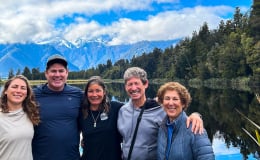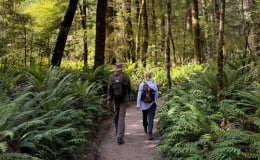
Keep Safe with Mountain Safety Council
We’ve teamed up with New Zealand Mountain Safety Council to provide you with a comprehensive guide to keeping safe out on our trails.
There are a few questions regarding safety out on our trails that we constantly get asked by our guests. We thought who better to answer them than New Zealand Mountain Safety Council?
If you are venturing out into the New Zealand backcountry, this information will be extremely helpful. When travelling with us, we will always be on hand to help. Keeping you safe and supported is our highly experienced guides top priority! However, there is no such thing as too much information when it comes to your safety!
For a safe and enjoyable experience in New Zealand’s outdoors, it’s important to plan for your adventure. You can find helpful resources such as how-to video series, e-learning tools and activity guides at mountainsafety.org.nz but first, take a look at the answers to these frequently asked questions about keeping safe out on the trails.

What should I always take with me?
- Extra clothing such as a waterproof jacket, a warm layer and a warm hat
- Flashlight/torch or headlamp with spare batteries
- Water and food
- Personal medication
- Mobile phone
- Sturdy footwear

What do I need to pack for a multi-day hike?
Clothing and Footwear
- Wear and pack layers - light layers are easy to carry if taken off.
- Keep your core warm - focus on your chest, head, feet and hands.
- Pack for all conditions - weather is changeable. Be prepared with rain protection and extra layers.
- Always take wind and rain protection - a good outer layer that will protect you from rain and wind is essential.
- Wear the right footwear - you should consider tramping shoes or boots for strong support and grip. Most importantly your footwear should be comfortable.
- Take long socks - long socks provide greater comfort and protection. Include a few pairs.
- Wear gaiters - these go around the top of your boots and keep things out of your footwear.
- Take a change of clothes - having warm, dry clothes can be a life saver.
- Wear the right fabrics - clothing only retains what heat your body produces.
- Sun protection - a sun hat/cap and sunglasses.

Food and Drink
Hiking uses a lot of energy, so you need to stay fuelled and hydrated.
- Take a 2L bottle of water per person - depending on the length of your trip and your access to water along the way.
- Take a mix of food types and take more food than you usually eat.
- Take snacks that are easy to prepare - you don’t want to be getting your cooker out at every stop.
- Make it pleasant - food has real emotional and psychological value, and this can make a big difference to your trip.
- Take emergency food - take extra lightweight food in case you are delayed.
- Be cautious when sourcing water - if in doubt boil, filter or treat water before drinking.
Equipment
Having the right equipment with you is essential to a good hike/tramp. You need to think about what you’ll eat, where you’ll sleep, what you’ll need to keep yourself safe – all the things we take for granted at home. You can get this equipment from most outdoor stores.
What you need depends on your trip, but our suggestions for essentials are:
- A comfortable hiking pack - the size will depend on how long you’re out for and how much you have to carry.
- A pack liner - it keeps everything in your pack dry.
- Shelter - even if you’re planning to stay in huts, an emergency shelter is a good idea, just in case.
- Sleeping bag - what kind will depend on the type of trip and time of year. Talk to the retail staff in the outdoor clothing store.
- Insulation mat - without an insulation mat your body heat will seep into the ground, leaving you cold and miserable.
- Cooking equipment - you’ll need a stove or cooker, fuel and utensils suitable for your planned meals.
- A first aid kit - consider the size of your group and how long you’re out for. You may want a small, personal kit for your own medications.
- Navigation equipment - a map of your trip is the minimum you’ll need to carry.
- Walking poles - even one can save you energy on a long tramp.
- A flashlight/torch or headlamp with spare batteries.
- Toilet paper + rubbish bag.

Hiking the Hooker Valley Track in Aoraki/Mt Cook National Park.
How do I know if the route suits my abilities?
Check DOC’s track grades and choose a track to match your skills, fitness and the experience you want. Look at how long it is and compare it with walks you’ve done recently. Pay extra attention to elevation gains and losses. Be extra careful if there are unbridged river crossings, off-track routes or exposed sections.
Learn more about your destination by visiting the DOC Visitor Centre, a local i-SITE or talking to someone who has been there.
Watch the MSC Tramping (Hiking) video series to discover more about some of the most popular tracks in New Zealand.
Looking for a handy tool to stay safe on the trails? Try out Plan My Walk!







